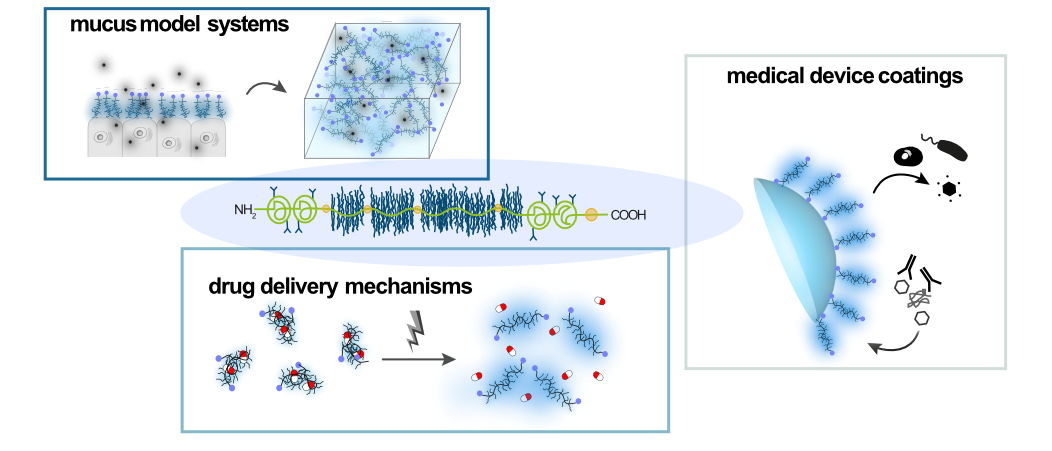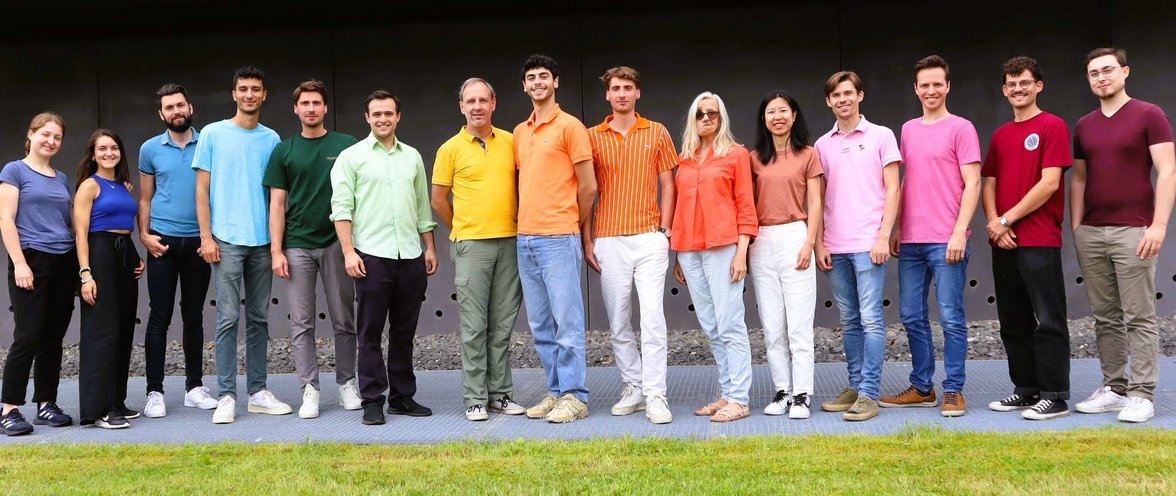Biopolymers are produced by cells, which use them both, inside and outside the cell membrane. Here, the biopolymers form structures which serve a dual purpose: on the one hand, they are responsible for the viscoelastic properties of cells and tissues; on the other hand, they regulate the passive transport of particles and molecules. This dual function is particularly evident for mucus gels lining the wet epithelia of our gastrointestinal system. Here, they repel or trap pathogens and protect the tissue from mechanical challenges as they occur during the chewing or swallowing of food. A similar dual role is established by the tear film covering the interface between the ocular cornea and the eye lid. Overall, nature tends to employ biopolymer systems to optimize the interface between two materials – and a similar approach can be very helpful when we humans try to place objects made from synthetic materials into the human body.
Our research has the following goals:
- To identify the microscopic principles that govern the material properties (e.g., mechanics, permeability, and lubricity) of biopolymer systems.
- To develop materials (nano-/microparticles, coatings, hydrogels) from biopolymers for potential applications in medicine/medical engineering/drug delivery.

Together with other interdiciplinary research gruops we are a part of the intitute Center for Functional Protein Assemblies (CPA) located at the university and research campus of the Technical University in Garching near Munich.


